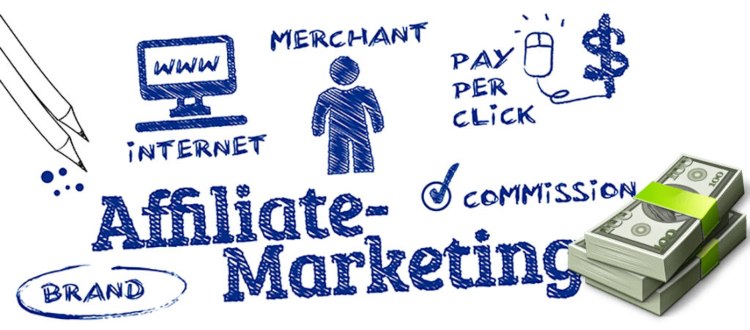Affiliate marketing is one of the best means of earning extra money for individuals and is also a great way to promote a brand.
Social media platforms have provided businesses and affiliate marketers new opportunities to grow.
In this article, we’re going to talk about the use of social media for affiliate marketing.
What is affiliate marketing?

Affiliate marketing is a monetization model where content creators (or affiliates) earn money or commissions by promoting another brand’s products.
Brands typically pay affiliates for trackable sales. However, some brands reward affiliates for lead generation, free trial users, and e-book and app downloads. Whatever the metric, brands only pay affiliates for actionable results (not just awareness). In marketing, this is called the cost-per-action or pay-for-outcomes model.
You’ve probably seen affiliate marketing in action if you watch YouTube videos often. All these discount codes and special links that YouTubers need to click to buy products are used to track affiliate sales for YouTubers.
Affiliate marketing programs are great for brands to partner with popular content creators such as social media influencers and mega YouTubers. It also gives these creators the opportunity to work with brands they truly love. How affiliate marketing works:
Brands set up affiliate marketing programs allowing content creators to drive traffic to their landing pages and sales for a small fee. These sales are tracked through a unique link or code.
Content creators look for affiliate programs that fit their niche. They use affiliate links and promotional codes when mentioning products in social media posts and online content.
Content creators (or affiliates) earn commissions when people buy products through links or codes. This helps brands reach audiences they wouldn’t be able to reach on their own. Both sides benefit from the relationship.
Who should use affiliate marketing?
Affiliate marketing can be of great use, especially for:
eCommerce brands and retailers
Partnering with content creators who have a branded audience can help you reach a wider audience without running paid ads. Affiliates earn commissions only on trackable business results (based on company conversion requirements).
In most cases, brands and retailers pay commissions when customers make purchases through affiliate links. However, if the item is priced high, brands may pay for leads, signups, app installs, book downloads, and even clicks.
Pay only for results that directly affect you. Besides popular content creators, brands can also partner with nano-influencers through affiliate marketing programs.
Nano-influencers are less popular, but their follower base is usually specific and highly engaged. In fact, some brands are getting better results with nano-influencers than with mega-influencers.
Content creators and influencers
Social media affiliate marketing is one of the best social media jobs for content creators and influencers.
Some platforms like Instagram have won the competition in this regard, which is why many affiliate marketers try to buy Instagram accounts with thousands of followers. This allows them to start earning extra money instantly.
Also, this lets you to recommend relevant products to your audience without sacrificing content quality.
If there’s a product you’ve always wanted to partner with because it’s beneficial to you, check to see if that product has an affiliate program. If so, you can apply for it and earn money by recommending it to your audience.
Brands can be unaware of you or agree to an exclusive partnership if you qualify for the affiliate program. But if you start making a lot of sales your way, they may be interested in a brand partnership with you.
To make it easier for content creators to benefit from affiliate marketing campaigns, Instagram has introduced native affiliate tools.
Setting up an affiliate marketing program on social media

Here is a step-by-step guide for setting up your affiliate marketing strategy:
Set goals
As with all marketing strategies, you should start your affiliate marketing program with clear and measurable goals. These goals will help you understand how affiliate marketing fits your social media marketing strategy.
Start with the audience you want to reach. What type of customers do you want to reach through your affiliate program, and what kind of content can her creators help attract these customers? Next, think about what you want to achieve with your affiliate program.
Just want more sales? Do you want to build brand awareness? Or do you want to capture sales funnel leads?
You can also set goals for:
- Affiliate-determined Average Order Value (AOV).
- The amount of revenue you want to generate monthly/quarterly/yearly through your affiliate program.
- How often do you want people to make purchases through your affiliate link?
Sales are the most critical conversion metric, but other metrics, such as impressions, clicks, and leads, can also help measure the success of your program.
Determine payment methods and partnership models
The next step is deciding how to reward your affiliates when they start sending customers your way.
Here are the factors that determine how much we pay our affiliates and what business outcomes we pay them:
Payment model (what you pay affiliates)
About 99% of brands use a cost per action (CPA) model. That means you pay a commission per sale, lead, click, or install.
Attribution model
This is necessary when many partners help drive traffic to your brand. 86% of businesses use last-click attribution.
This means that we pay a commission to the last affiliate to send someone to you before making a purchase. So you can use first-click attribution or even pay affiliates who influence your sales funnel.
Commission structure
How much do you pay affiliates for each sale? Do you pay a percentage commission or a flat fee? As a brand, you need to know how much you are spending on new customers or sales based on your social media advertising budget.
No matter how much you pay, be sure to offer attractive commissions that motivate creators to sign up for your affiliate program and promote your brand.
Track your affiliate campaigns’ sales

If you find setting up tracking for your affiliate program to be a complicated process, you are not alone. Many marketers don’t know how affiliate sales are tracked.
The easiest way to set up tracking for your affiliate program is through our affiliate management tools. If your website is on an eCommerce platform, check out our recommended tools. For example, the Shopify App Store recommends top apps like Tapfiliate and UpPromote.
You can also track the program through affiliate networks such as Rakuten (formerly LinkShare) and CJ (formerly Commission Junction). The main advantage of using affiliate networks is that they help you find more affiliates. These networks are also the easiest way to set up tracking, as you don’t need to know how to code.
Alternatively, you can run a simple affiliate program with coupon codes and UTM parameters. Simply assign each partner a unique coupon code and a UTM code for tracking. Then get the results from Google Analytics.
Whatever method you use to track your affiliate sales, we make it easy for your affiliates to embed the code in their online and social media content.
Killing two birds with one stone, right? Offer your partner a coupon code with a discount. This encourages followers to visit your site while tracking affiliate sales.
Conclusion
Using social media to grow your affiliate marketing strategy is a great way to connect with potential customers and promote your products. You can use many different social media platforms, so find the one that works best for you. You have to find the best platform for your brand and work with suitable affiliate marketers.


